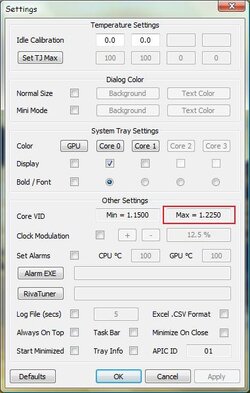I recently bought a Asus Rampage Extreme and I can't seem to budge it past the preset "crazy" setting which is 3.5ghz (2.66ghz stock). If i try going any higher It will fail to boot. I am unknown to a large majority of the settings on my motherboard so there is a good chance I'm doing something incorrectly. If anybody has an idea on how to get it past 3.5ghz please let me know.
Thanks
Thanks
